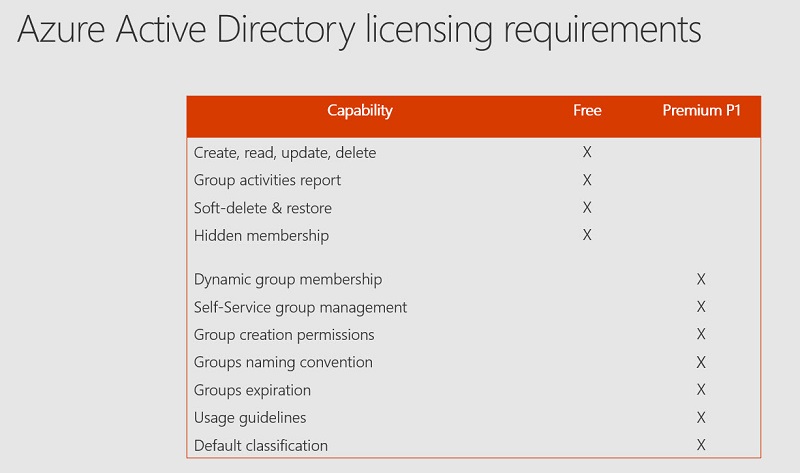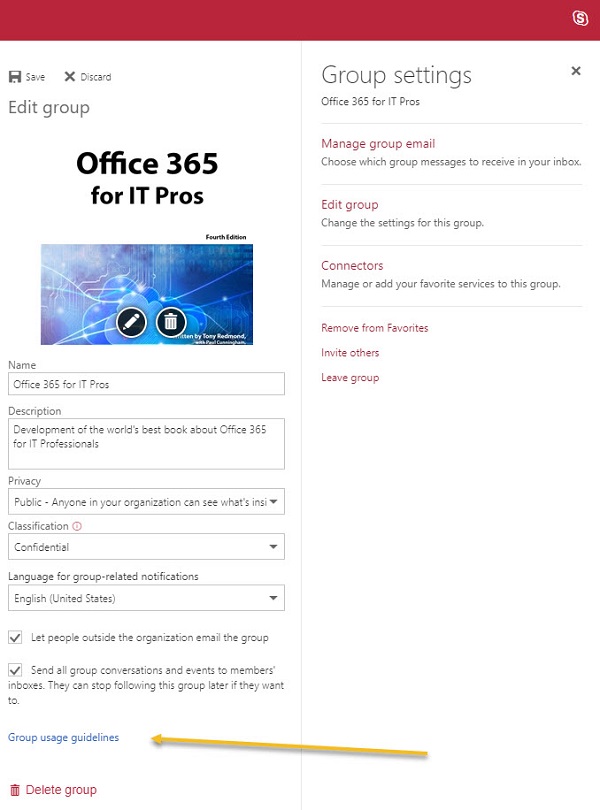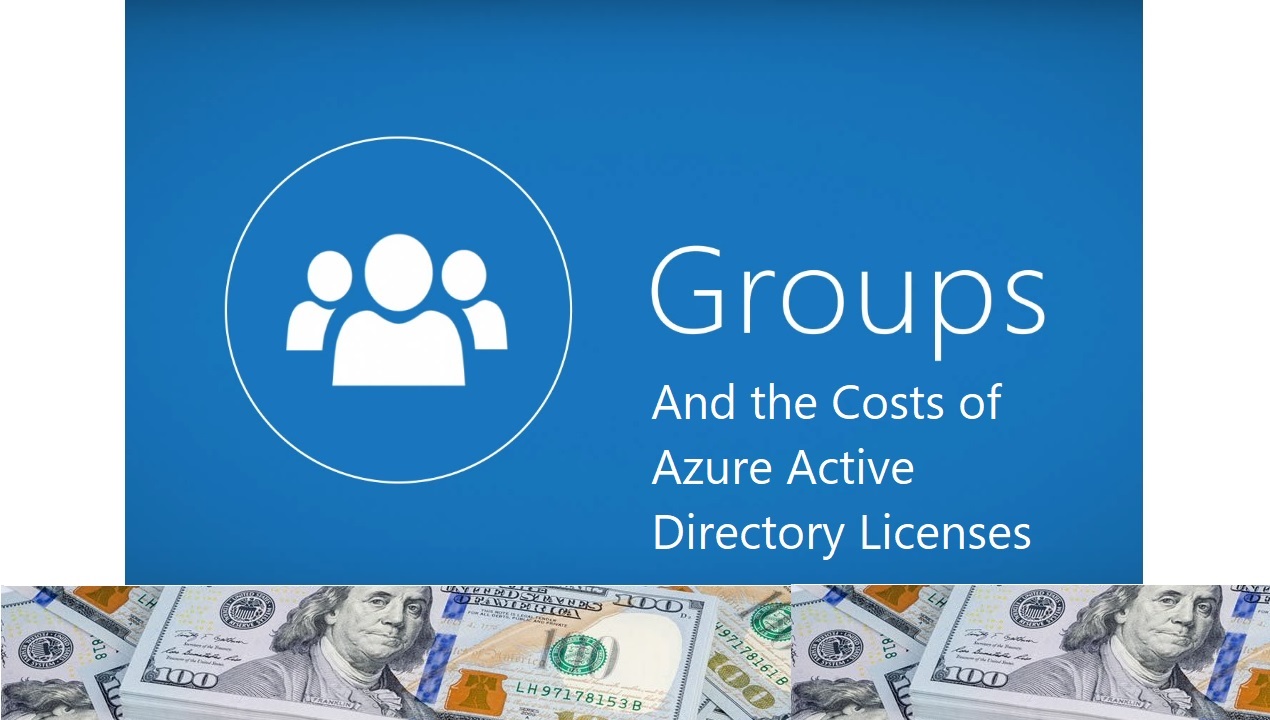Microsoft Clarifies Premium Features for Office 365 Groups. Prepare to Spend More!
AAD Dictates Licensing for Office 365 Groups
On October 10, 2017, I wrote about how the licensing requirements imposed by Azure Active Directory can create extra costs for Office 365 tenants. The problem is simple. If you want to use some features of Office 365 Groups (or with Microsoft Teams), you need Azure Active Directory premium licenses.
The issue blew up at the Ignite conference when Microsoft included a slide (Figure 1) listing features that need premium licenses in all the presentations about Office 365 Groups.

The reason why Azure Active Directory is involved is that Microsoft views these features as extensions of the basic Azure Active Directory plan bundled with every Office 365 tenant.
No one minds paying extra for new functionality that adds real business value, like the group expiration policy. But asking more for features that are hardly premium or should be in the basic Office 365 package causes discontent, especially when features replicate existing functionality.
New Support Article Lays Down the Law
In any case, on December 12, Microsoft published a new support article (Learn about Office 365 Groups) to lay out their case. Although it is welcome for Microsoft to say clearly what features are free and included in Office 365 plans and what you need to pay extra for, it is disappointing that they have not responded more positively to the pretty blunt feedback they received after Ignite.
The article lists several features that are free. It came as a relief to learn that CRUD operations for groups are included in the free version of Azure Active Directory included in Office 365 plans. Usage reports are free too, as is the ability to restore a deleted group.
But then we get to the heart of the matter and learn when premium Azure Active Directory licenses are needed. This list summarizes the features that need premium licenses.
- Restrict ability to create new groups to defined set of accounts.
- Use expiration policy to force renewal of groups after set period.
- Create and use dynamic Office 365 Groups.
- Apply naming policy to new groups.
- Apply default classification to new groups.
- Force new groups to have classification selected from set list.
- Provide URL with usage guidelines to internal users.
- Provide URL with usage guidelines to guest users.
- Allow guest users to become owners of groups.
Remember, if you use Microsoft Teams, you also use groups, so you might incur licensing liabilities through that application.
Although the article does not say it, an account needs a premium license if it benefits from a premium feature. For instance, if you create a dynamic Office 365 Group using a query that finds 12 accounts, those accounts all need premium licenses.
Open Wallets if you use a Group Creation Policy
The biggest surprise is Microsoft’s continued insistence that if you want “granular self-service group creation controls,” it’s a premium feature. In other words, if you create a policy for your tenant in Azure Active Directory to restrict group creation to a set of users, you incur the need for premium licenses. And not just for those who can create new groups. You need premium licenses for every account in the tenant because all accounts “benefit” from the feature (some can create new groups, others cannot). I am baffled by such a liberal interpretation of licensing rules.
As to the other features, making a naming policy a premium feature is ludicrous when a similar policy is available free of charge for Exchange Online. You can make a similar case for Dynamic groups, as this functionality has been available without charge for distribution lists since 2003. There is no innovation in these features; they simply rehash what has gone before.
Deciding to charge extra for features that are free in Exchange creates an unnecessary and costly obstacle for tenants who want to move from distribution lists to groups, which seems to be what Microsoft wants. If I made the licensing rules, features like naming policy and dynamic groups would be free for the next few years to encourage tenants to move to groups.
Charging for Classifications
Charging tenants to provide a URL to a web page with guidelines for group usage (Figure 2) is also difficult to justify. Just how hard was it for Microsoft to engineer this “feature” and how is it premium functionality??

The same is true for applying a default classification to new groups (including new teams). This is not rocket science. Instead, it is simply helping tenants use groups intelligently.
But You Might Be OK
Obviously, the need to have Azure Active Directory premium licenses for some features make them less attractive than if Microsoft bundled the functionality into the standard Office 365 plans. However, you might have other reasons to acquire Azure Active Directory premium licenses, such as buying the Enterprise Security and Mobility suite, so the problem might not be as big as it seems.
It is also true that you should consider the set of features as a package rather than individual items. After all, implementing a group expiration policy is a different level of complexity than making sure that new groups get a default classification. It is easier to argue that customers should pay to use a premium package when the entire bundle is recognizably premium instead of an inconsistent mixture of functionality.
Engineering Costs, but We Already Pay for Office 365
Microsoft spends a lot of money engineering Office 365 and the ecosystem surrounding Office 365, including Azure Active Directory. But that is no reason to overcharge customers for functionality that arguably belongs in the Office 365 plans.
I know some ultra-talented Microsoft people think long and hard about licensing policy. Sometimes a decision made in Redmond is not so good when viewed by customers. In this case, I hope Microsoft reconsiders its policy and removes the need for premium licenses for at least some of these features.
Follow Tony on Twitter @12Knocksinna.
Want to know more about how to manage Office 365? Find what you need to know in “Office 365 for IT Pros”, the most comprehensive eBook covering all aspects of Office 365. Available in PDF and EPUB formats (suitable for iBooks) or for Amazon Kindle.




